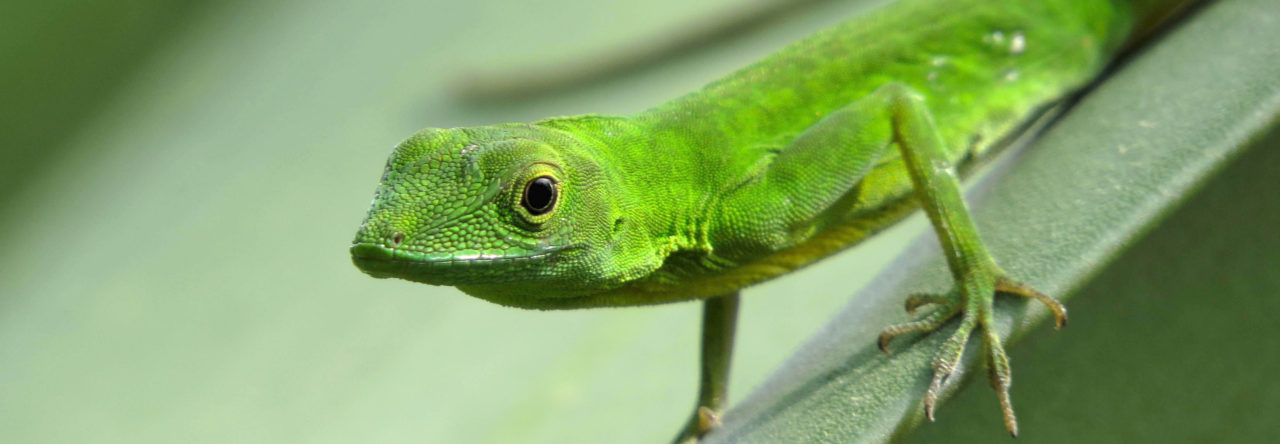Based on thermal constraints, as deduced from the effects of global warming on key aspects of thermal biology (e.g. field and laboratory temperatures, and thermoregulation indices; after Hertz et al., 1993), Dr. Piantoni and Dr. Navas from the University of São Paulo, Brazil, and Dr. Ibargüengoytía from the University of Comahue, Argentina, assessed the vulnerability of a sample of populations from the genera Anolis, Liolaemus, Sceloporus, and Tropidurus from a broad range of ecological settings such as the deserts of Yucatan, the Brazilian Cerrado, the lowlands of southern Patagonia steppe, the rainforests of Puerto Rico and the Nothofagus forests in Tierra del Fuego. The combined data on the four iguanian lineages, reported in a just-published paper in Animal Conservation, corroborate the hypotheses of increased susceptibility to warming in species from lower latitude and lowlands, and contributes to debate climate-related risk of extinction in lizards.
Thermoregulatory behavior increases with latitude and altitude and tropical and lowland environments are mainly occupied by thermoconforming lizards. In most of the cold and temperate environments (e.g. inhabited by Liolaemus and Anolis), warming could be neutral or beneficial and vulnerability to climate warming is not only linked to the efficiency of thermoregulation, but also to the high geographic and seasonal variation in the thermal biology of these species. Near the equator, susceptibility to climate change is associated with the tendency to physiological specialization as a result of the thermal stability of the forested environment and of the high proportions of operative temperatures exceeding the critical thermal maximum of most lizards of the open environments. The substrate temperatures at these localities will further increase with warming and eventually achieve overheating values. Whereas thermal shelters may assist lizards in the short-term, the compromise between sheltering and activity time may affect fitness in the long-term.
Overheating become a concrete risk in these environments, both as a direct driver of death or as a limiting factor for activity. Although a recent study on A. sagrei confirmed that some tropical populations might be capable of adapting to warmer and thermally variable environments (Logan et al., 2014), adaptive trends are unlikely to outrun global warming. Besides, habitat fragmentation and transformation may constrain the possibilities to disperse to cooler environments accelerating the extinctions, particularly in montane populations that would also face the upward progress of lowland species.

Adult specimen of Tropidurus torquatus from Tocantins, Brazil
Finally, it should be noted that the studied populations are potentially challenged by additional disturbances. Tropical populations, especially the ones inhabiting open and low elevation sites, are also vulnerable to the increasing fragmentation of the landscapes. For example, in Puerto Rico, species like A. cooki, which used to inhabit the dry forests, have been slowly displaced to areas in sympatry with A. cristatellus (Genet, 2002). The Brazilian savanna is gradually being replaced by soy fields and cattle ranches which may raise the soil temperature well above the predicted values and confine populations, such as Tropidurus torquatus‘ in Tocantins, to gallery forests. Paradoxically, the species with the highest vulnerability seem to inhabit the least protected areas, which emphasizes the urgent need of mitigation measures as the increase in conservation units to protect their underestimated biodiversity.













